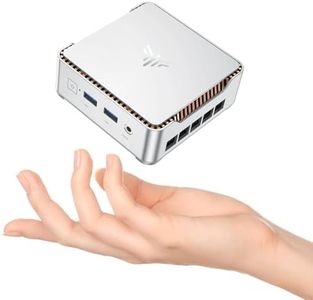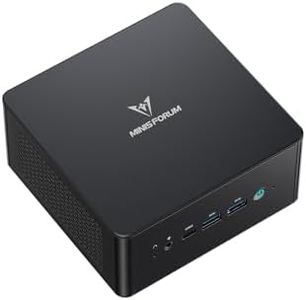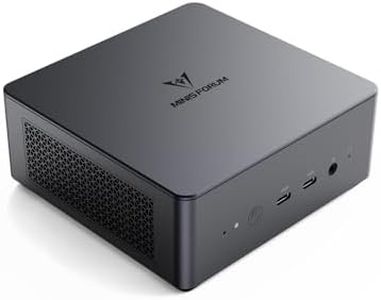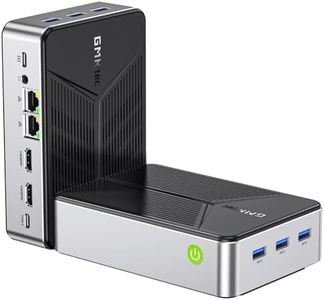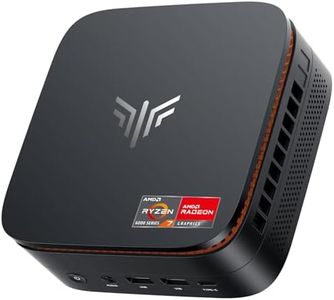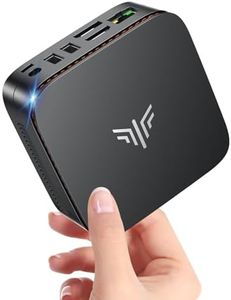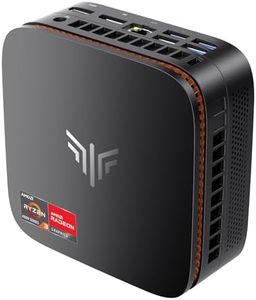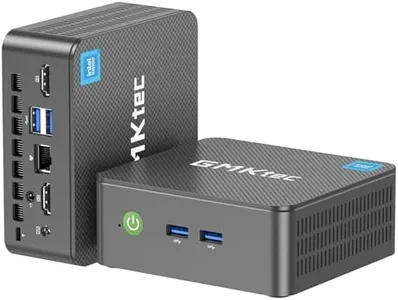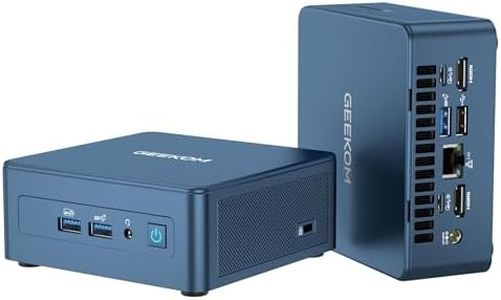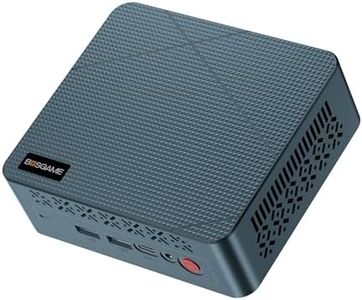We Use CookiesWe use cookies to enhance the security, performance,
functionality and for analytical and promotional activities. By continuing to browse this site you
are agreeing to our privacy policy
10 Best Mini Desktop Pcs
From leading brands and best sellers available on the web.Buying Guide for the Best Mini Desktop Pcs
Mini desktop PCs are compact computers designed to save space while still providing the core computing functionality most users need. When choosing a mini desktop PC, it's essential to consider your primary use: do you need it for everyday tasks like web browsing and office work, or more demanding activities such as photo editing or light gaming? Thinking about your specific needs and where you'll place the PC can help you focus on the right features without getting overwhelmed by options. Below are the most important specs and what they mean for you.Processor (CPU)The processor is the 'brain' of the mini PC and determines how quickly it can carry out tasks. This is particularly important if you use demanding software or multitask frequently. Entry-level options are great for web browsing and simple tasks, while mid-range CPUs can handle office work, streaming, and light photo editing. High-performance CPUs are best for heavy multitasking, software development, or creative work. Match your choice with the most intensive thing you plan to do—if you only check email, a basic CPU is enough, but for editing photos or running lots of apps, look for a mid- or high-range processor.
Memory (RAM)RAM helps your computer run multiple applications smoothly without slowing down. The more RAM, the more your mini PC can handle at once. For basic tasks, 4GB might suffice, but 8GB is a standard choice for everyday use and some multitasking. If you plan to open many browser tabs, run several programs at once, or do light creative work, 16GB or more will offer a noticeably smoother experience.
Storage (HDD/SSD)Storage refers to how much data your mini PC can hold, including your files, applications, and the operating system. SSDs (solid-state drives) are much faster and more reliable than traditional HDDs (hard disk drives), especially for loading programs and booting up. For smooth performance, go for SSD-based systems. Storage needs depend on what you store: light users (just documents and web browsing) may need 128GB to 256GB, while those storing lots of photos, videos, or games should look for 512GB or more.
Size and Form FactorThe size and shape of a mini PC affect where you can place it and how portable it is. Ultra-compact models can hide behind a monitor or fit into tight spaces, ideal for minimalist desks or entertainment centers. Slightly larger mini PCs offer better cooling and more upgrade options. If desk space is a top priority or you want something you can move easily, choose a smaller unit; for better performance and flexibility, be willing to accept a bit more size.
Ports and ConnectivityPorts determine what devices you can connect—monitors, keyboards, storage drives, and more. Pay close attention to the number and type of USB ports, HDMI or DisplayPort outputs, audio jacks, and whether Wi-Fi and Bluetooth are included. Think about what you’ll need to plug in: a single monitor and wireless devices need fewer ports, but if you want multiple screens, wired peripherals, or external hard drives, make sure the mini PC has enough and the right types.
Graphics CapabilitiesGraphics determine how well the mini PC handles visual tasks like video playback, light gaming, and photo or video editing. Integrated graphics are fine for browsing, streaming, and office work, while dedicated graphics or improved integrated chips are better for creative apps and casual gaming. Choose based on whether you plan to do anything visually intensive—basic needs don’t require much, but anything creative or game-related will benefit from stronger graphics.
UpgradabilitySome mini PCs allow you to upgrade parts like RAM or storage in the future, while others are sealed. If you think your needs may grow, look for models that let you add more memory or swap drives. If you prefer simplicity and don’t plan to upgrade, this is less important.
